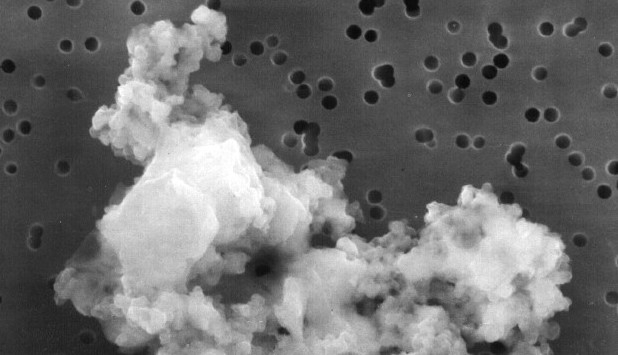radio signals? biosignatures? Researcher wants to look for extraterrestrial life in dust
Listening to radio signals or analyzing the atmospheres of distant exoplanets? At least that’s what the Japanese researcher Tomonori Totani from the University of Tokyo thinks is not necessary for the search for extraterrestrial life.
Totani believes that a search in cosmic dust, which reaches us from the far reaches of space, would be more promising. About 100,000 grains of dust are said to land on earth every year according to the researcher would be worth investigating.
Editor’s Recommendations
These grains could contain direct or indirect evidence of extraterrestrial life, such as fossils of microorganisms. According to Totani, such traces could be detectable now or in the near future.
Totani argues that radio signals merely indicate intelligent life that has made some technological progress. With the signatures in the atmospheres of exoplanets, on the other hand, one cannot be sure whether extraterrestrial life is really responsible.
This is different with potential signs of life in dust grains from space. According to the researcher, these would not only mean reliable proof, but could also be found quickly – if they are available.
Totani assumes that large amounts of soil material could be thrown into space by exoplanets, for example by asteroid impacts. These could contain recently deceased or fossilized microorganisms.
The researcher is convinced that smaller particles in particular could make it from their home planet over longer distances to Earth. Totani sees grains in the one-micron range as the most promising.
Factors that speak against a successful journey of such a speck of dust with extraterrestrial life include the distance and heat or radiation to which the speck would be exposed. Entry into the earth’s atmosphere is also not easily possible.
However, the smallest particles in particular could manage to enter without being burned in the process. Totani sees a correspondingly good chance that 100,000 grains will make it – year after year.
These could have been conserved in the Antarctic ice or on the sea floor. The big challenge is to recognize this material as coming from outside our solar system. In addition, one would have to look for organic traces in the dust.
16 breathtaking images of the earth from space
According to Totani it would also be possible to collect the dust from outside the earth and then study it. Materials such as airgel could be used for this, as NASA did with its Stardust mission.
Aerogels are 95 to 99.98 percent air. Using this material, the Stardust probe had dust particles from a comet in 2004 captured.



